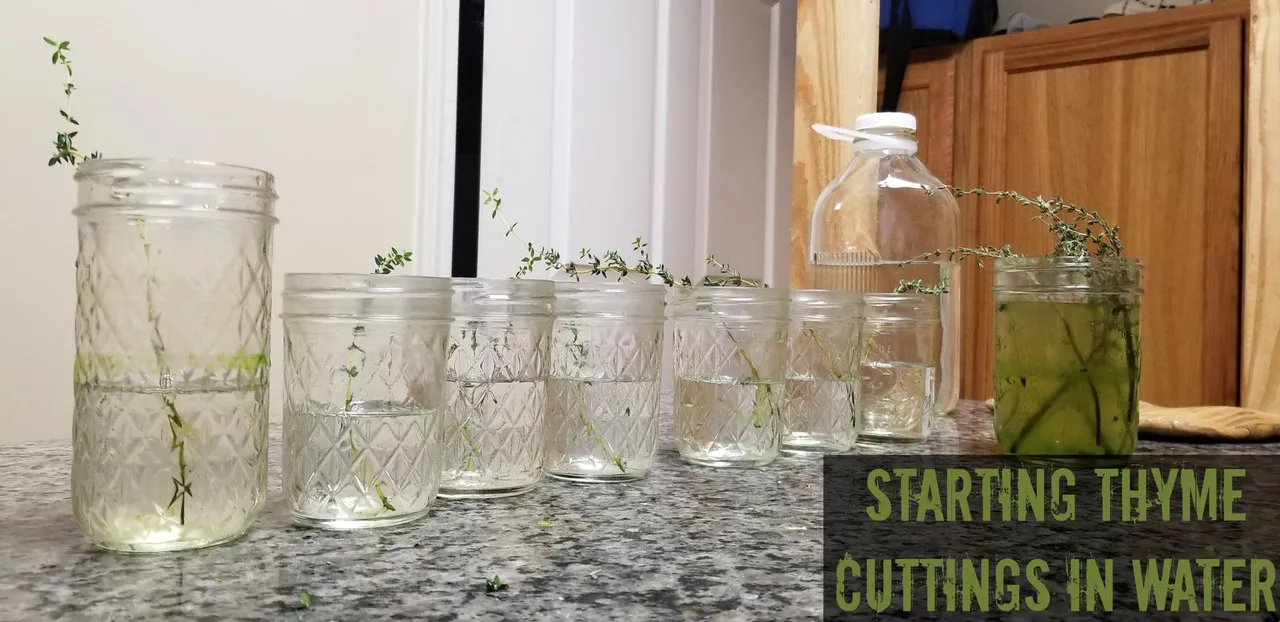
The last few months I have been propagating Thyme. My plan was to make a carpet of it in areas I have removed grass from. I started a bunch of seeds, but found the growth to be quite slow. So while I was at the supermarket I found a pack of "Thyme herbs" for sale in the vegetable section. These are cuttings of twigs of Thyme, and I had an idea. What if I could root them?
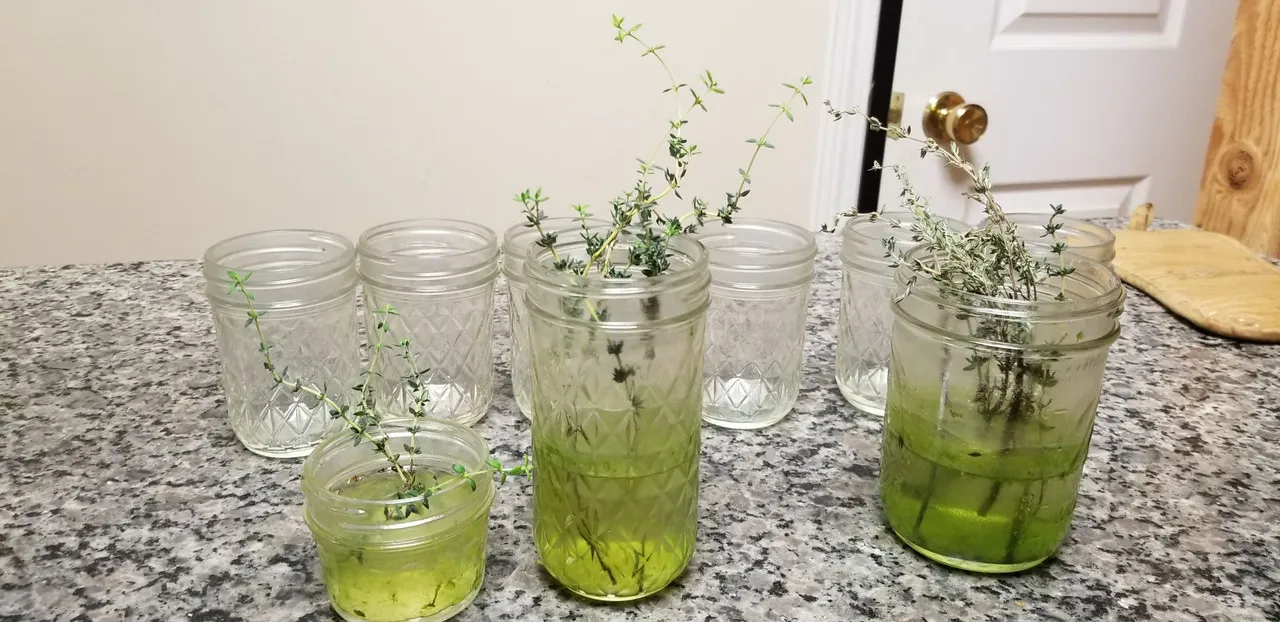
I bought this spice pack and got to preparing the twigs for propagation. I removed the lower leaves so they would not rot in the water. And then placed the cuttings placed in small mason jars in my sowing room.
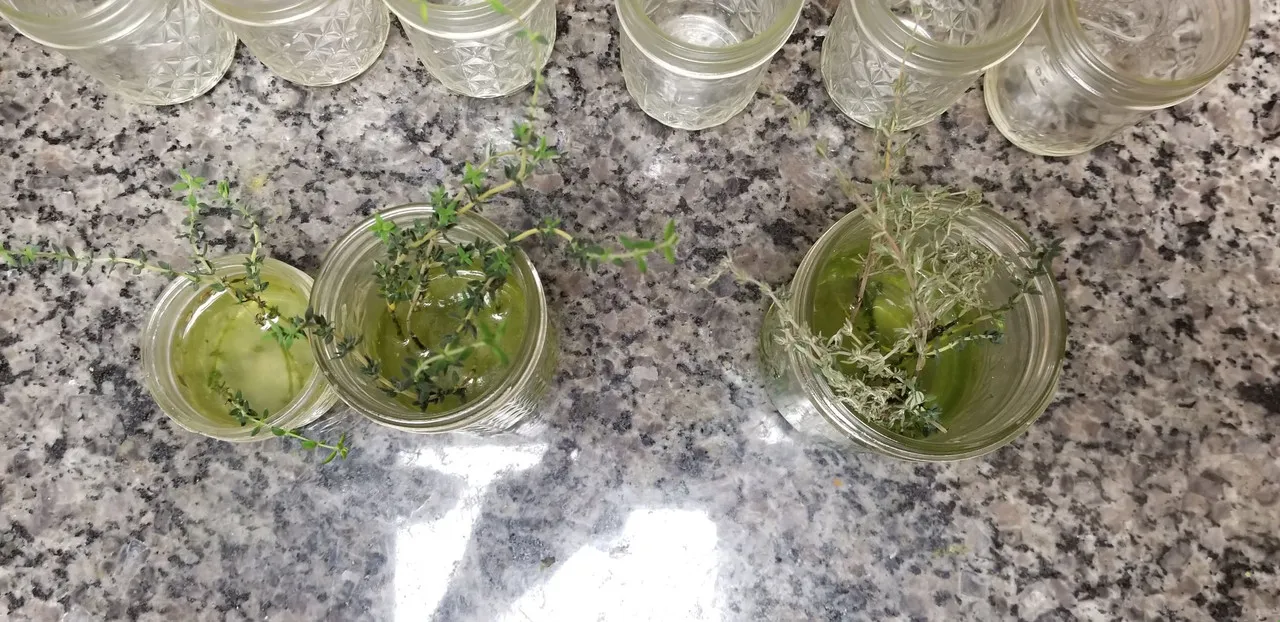
All of this was done about two weeks ago, and I had no idea of what the outcome would be. I hoped the cuttings would sprout roots and grow. But was unsure of what they were treated with to "preserve" them or how refrigeration would affect plants propagation.

Surprised to see new growth in the last few days, now I have new plants forming roots and shooting up new vegetation. Though I am unsure of what kind of Thyme this is, many kinds exist but the packaging just said "Thyme". So its a mystery what kind they are.
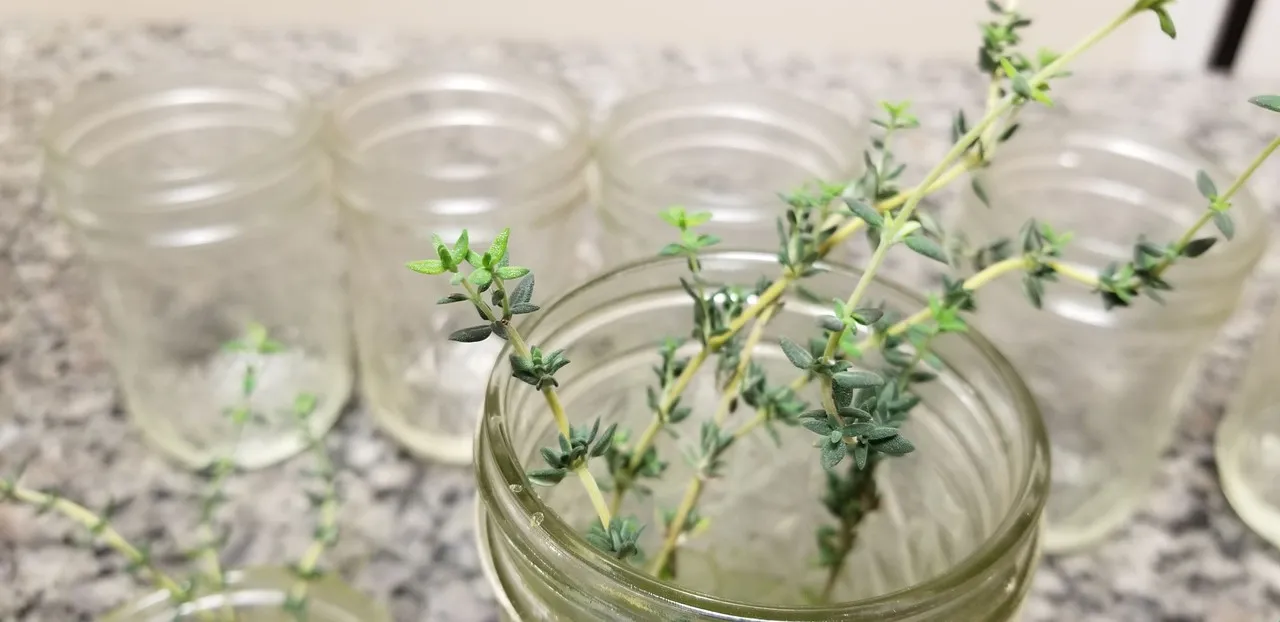
The new formation of leaves is a sign that the plant is growing. And looking down at the base of the cuttings I am finding many roots forming, this is good.
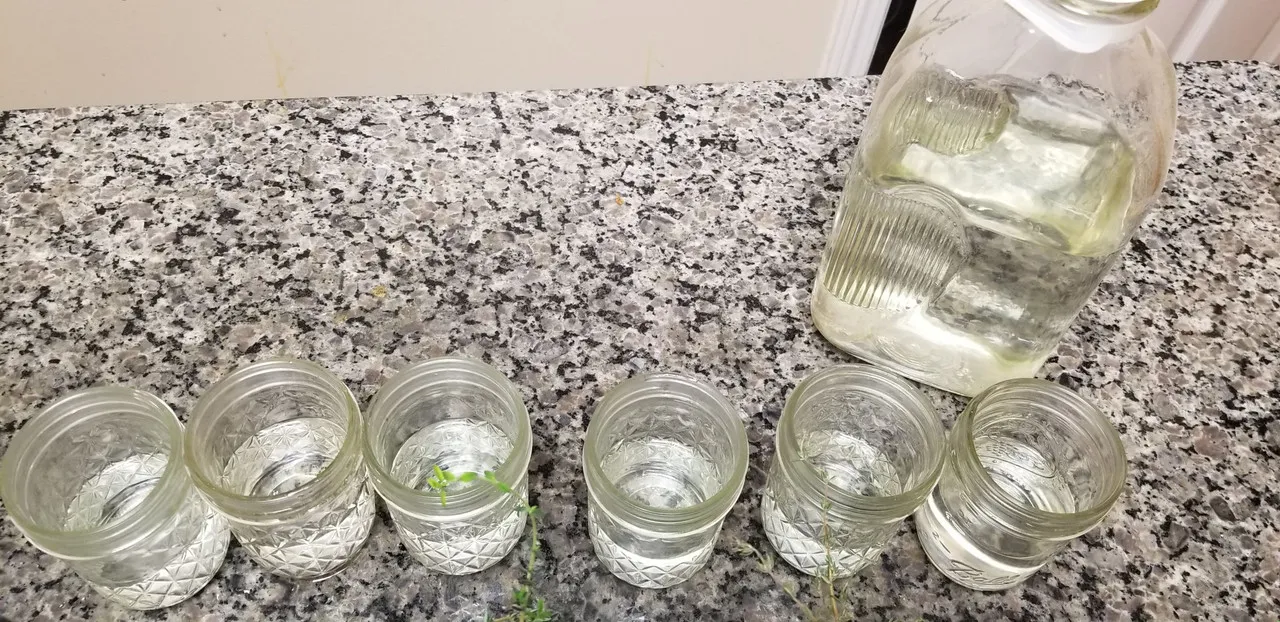
I try to only use water that has not been treated. Tap water tends to have microbe killing chemicals like chorine and fluoride. And that may affect the microbiome of the water in the jars. So I tend to use water captured from the humidity. Here in the South we get very humid summers, and I collect 10s of gallons of water from my air conditioners. I save this water and tend to use it to water my plants. Including adding water to mason jars for projects like this.

Here are some of the roots forming, some are tiny.. while others are getting a few inches long. I separated all the cuttings and placed them each into their own water container. Soon enough they will go into the ground, once the risk of frost is over. These Thyme are hardy but need help in the beginning to survive for a year. So I hope to place them in the ground this spring, though right now being early March its just too early.
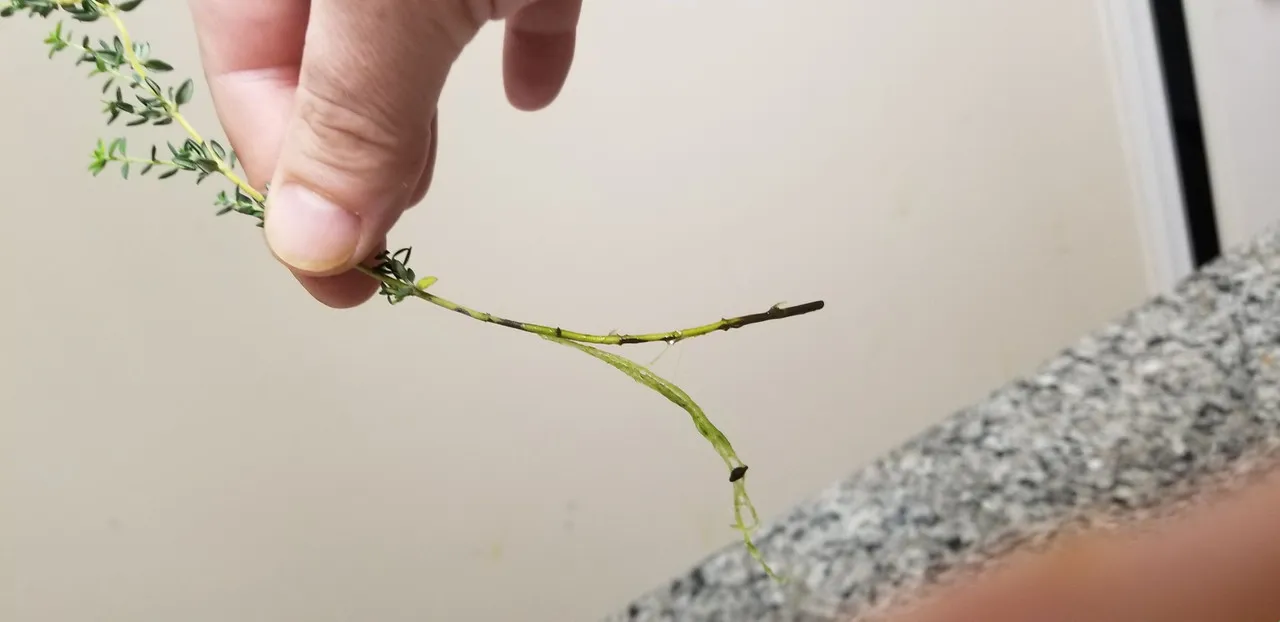
The roots are looking good, glad to see I can propagate from Thyme cuttings. Eventhough I have some Thyme plants grown from seed, they are not as thick as the cuttings from the stores. I figure what the product I buy is many years old and because of that every cutting should have more vitality in them.

The cuttings are suspended in water placed in mason jars, I only add enough water to cover the stems but not too much to flood the leaves.
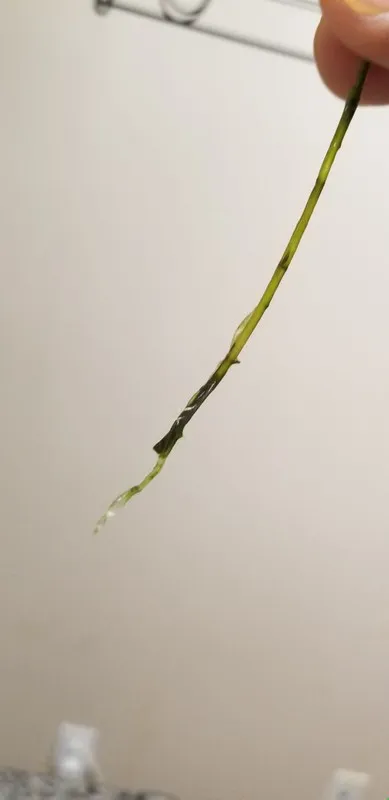
Some tiny roots forming, though on top it has alot of vegetative growth.
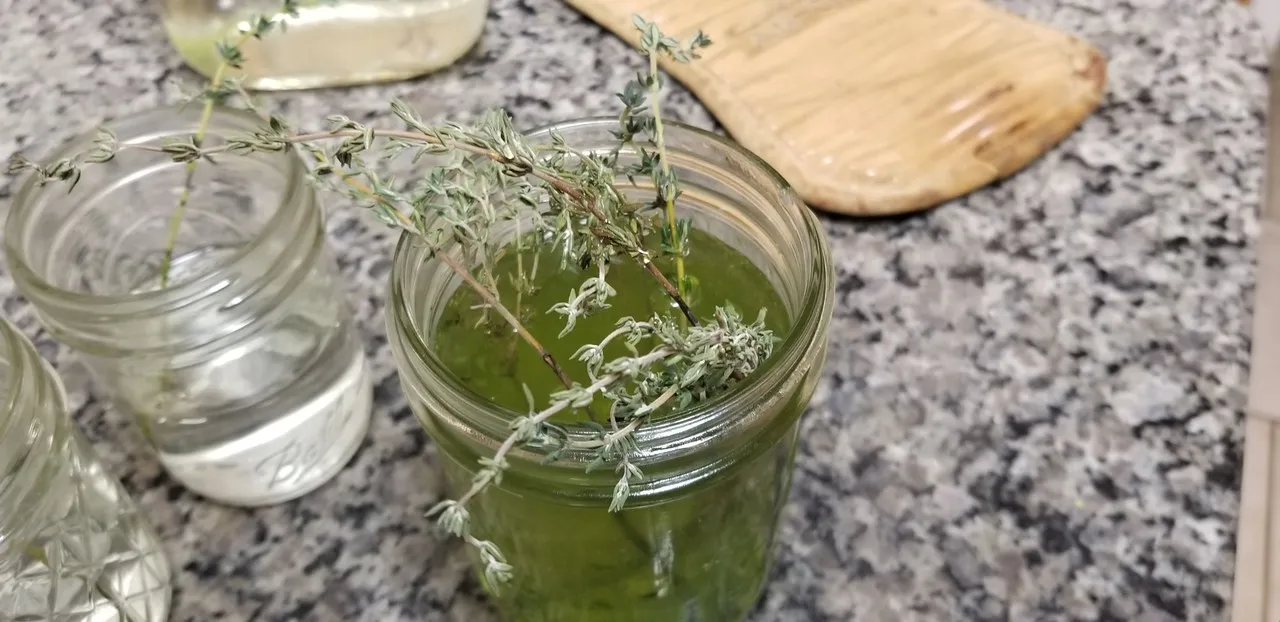
Above is a jar of the Thyme that has not done anything, many are dying and seem like they will not propagate. At this rate I have around a 50% propagation rate, the other half seem not to be viable.
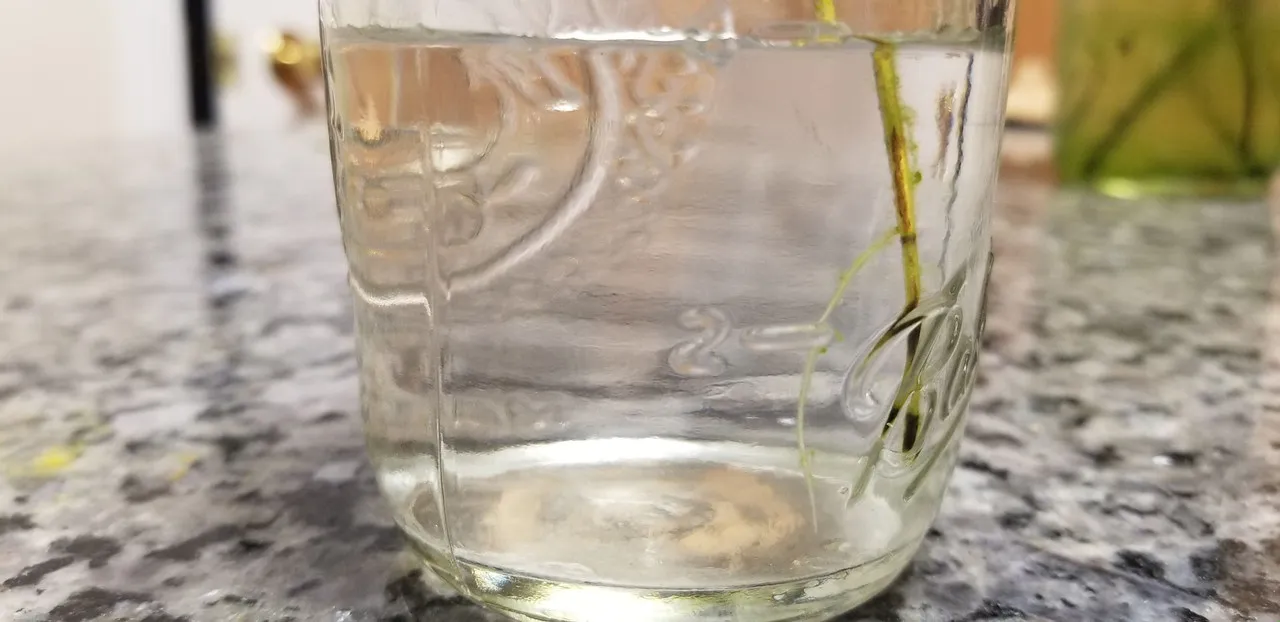
Placed in the water we can see roots pretty well, I tested growing these plants in water and they do surprisingly well.
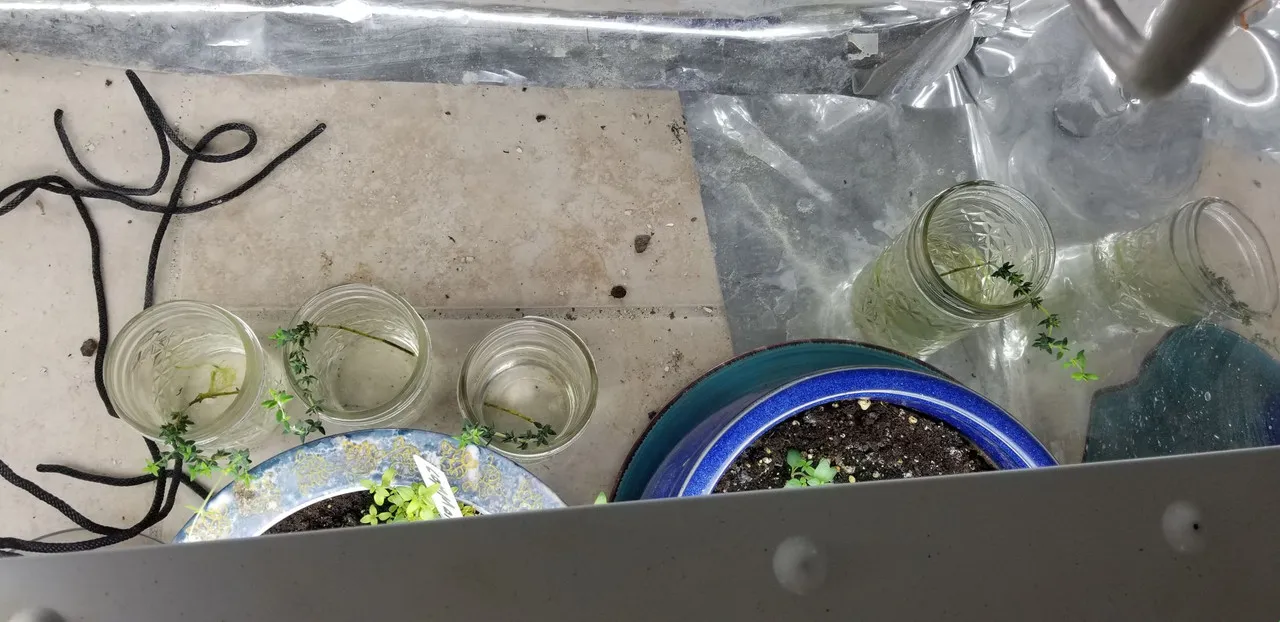
Now each of them have their own jar I hope to see alot more growth.
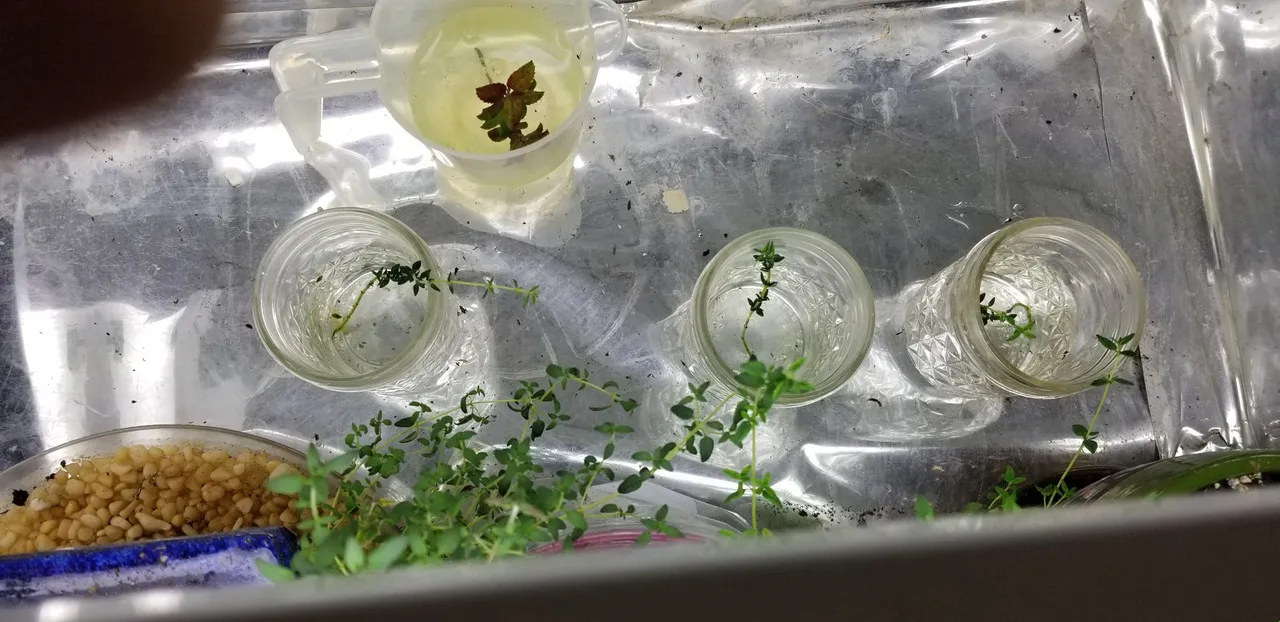
I also have a cutting of an Evergreen Huckleberry, a branch broke off while working around one. So I wanted to see if I could start a new plant.
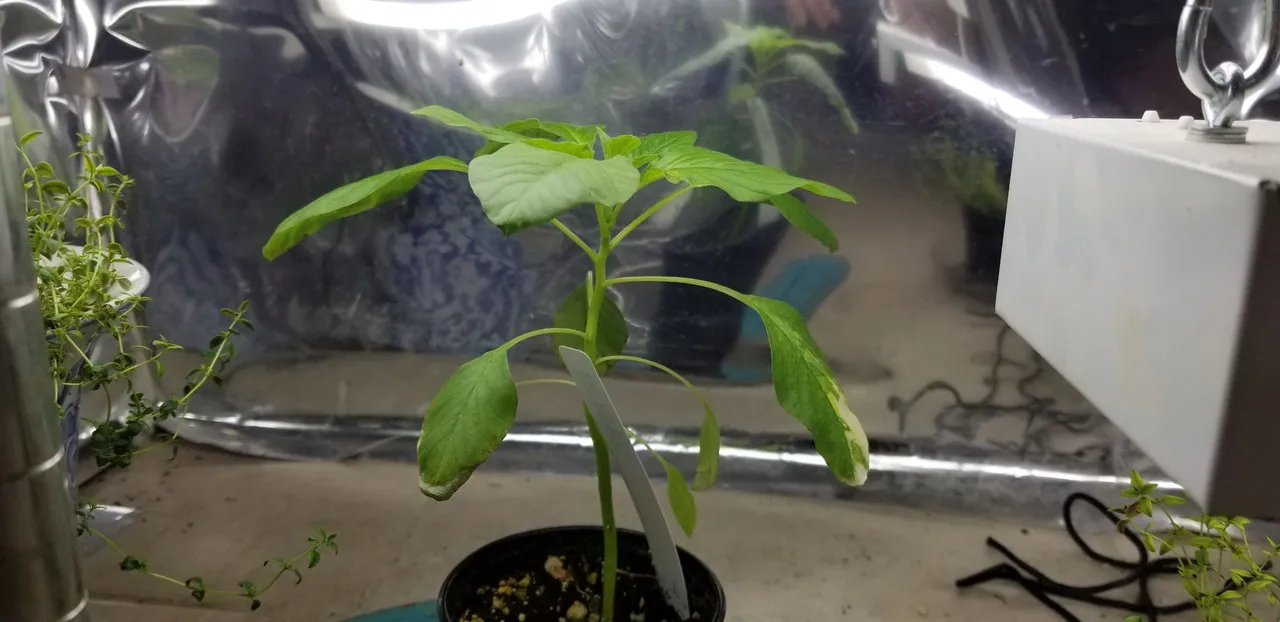
Some other plants were started as well for ground cover. A Periwinkle plant was grown from seed and is getting quite large. I hope to plant it this year as well in the ground. Hardy all the way down to zone 4 it should be fine here.

I was surprised to see the growth of the Periwinkle plant. I have had to raise the lights twice already for this booming plant. From what I read they will form a dense ground cover, exactly what I am looking for to replace my grass. Right now I have wood chips covering leaf mulch. Should make for a rich soil for them to grow in.
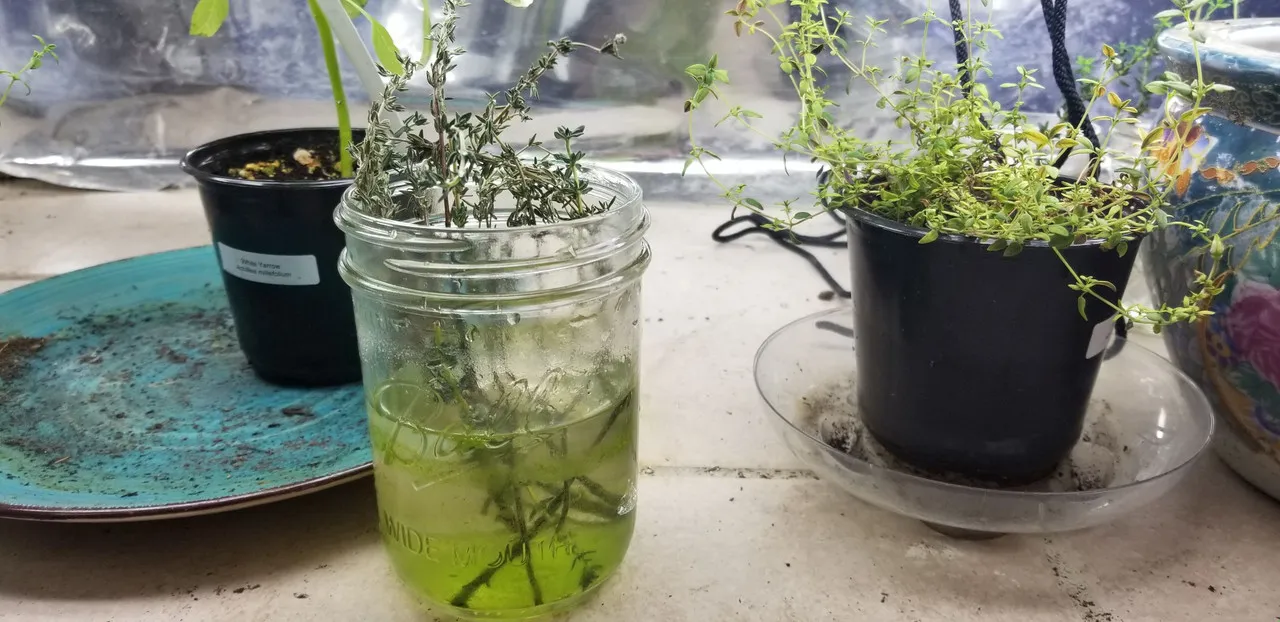
So next is to see if the cuttings form more leaves and roots. I hope the jar full of inactive Thyme also start forming leaves and roots. Though I may go back to the supermarket and buy more "Thyme spice" from the refrigerator section and see if I can propagate even more. As at this rate I am better off propagating from cuttings rather than germinating seeds.